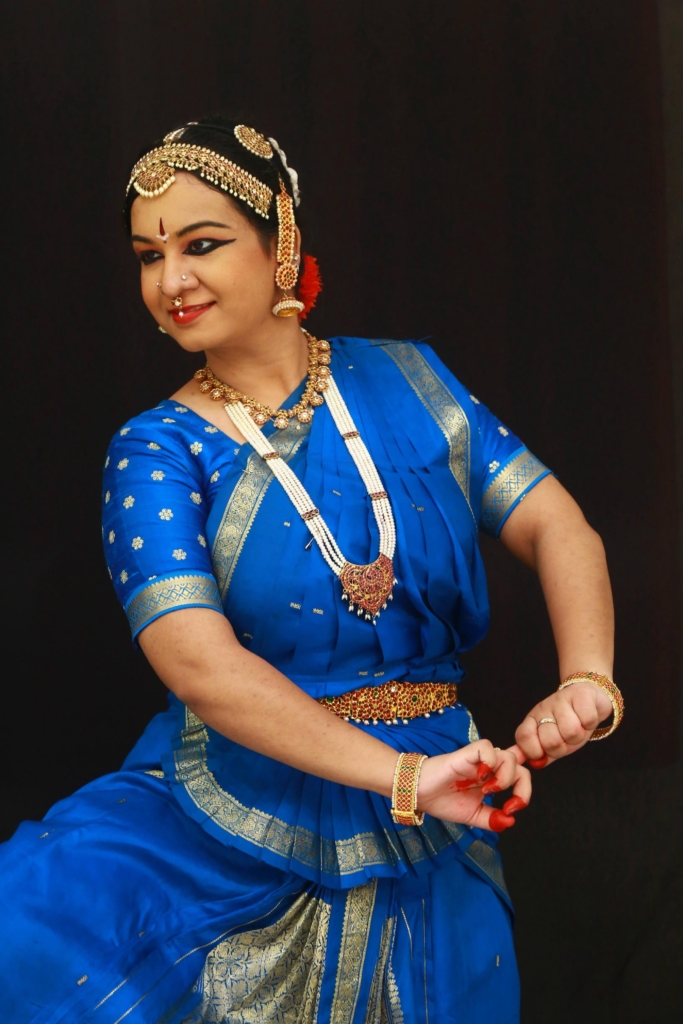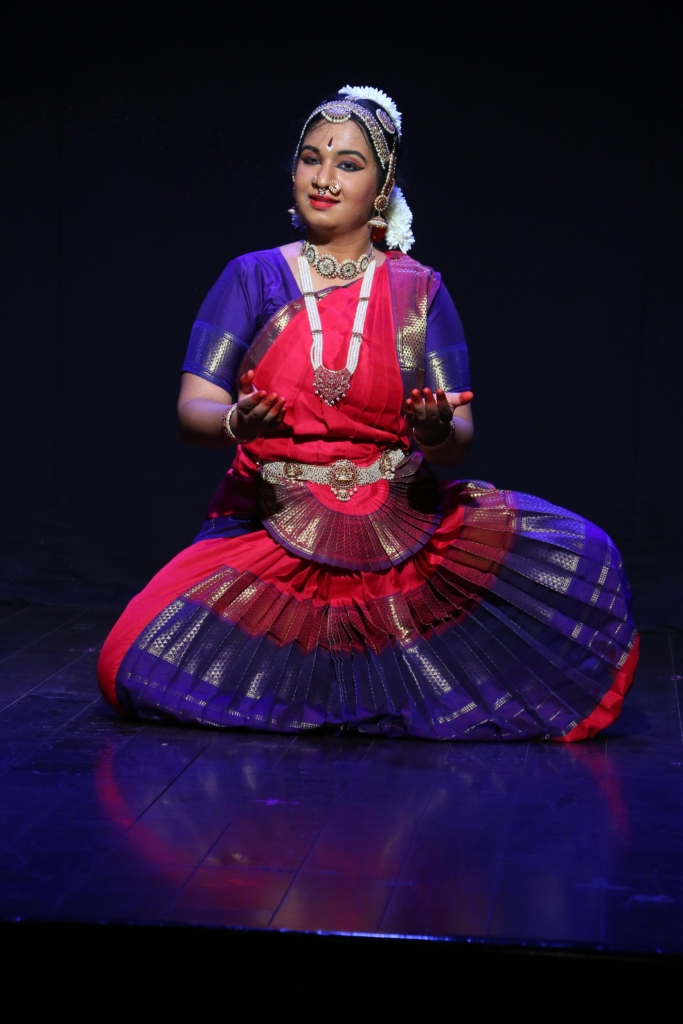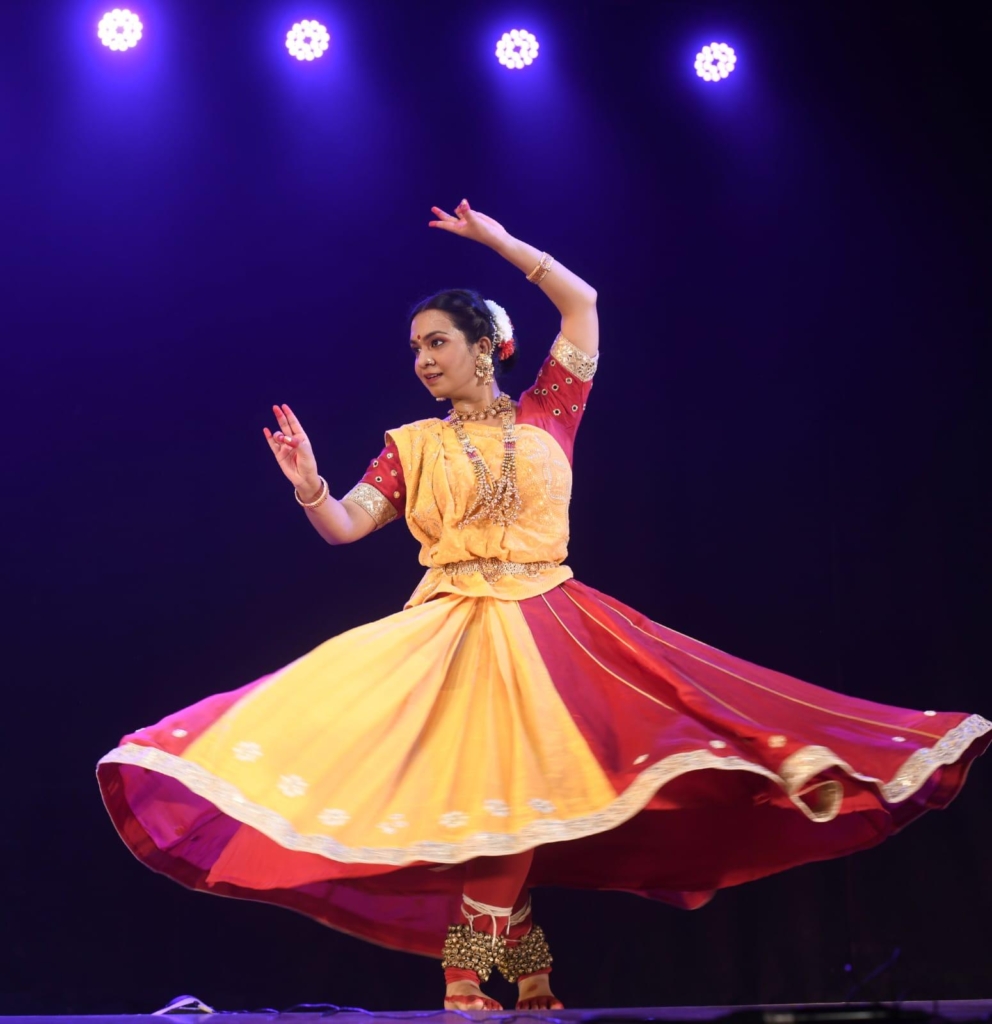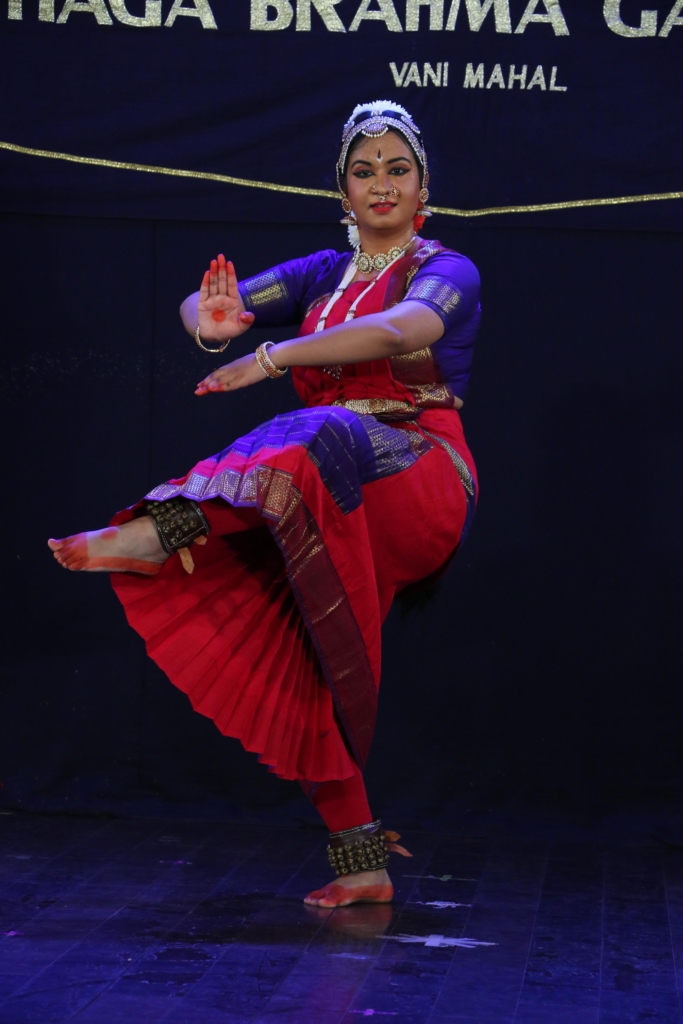“Since childhood, I’ve loved dancing, mostly to Indian and Bollywood music at home. I never took part in school cultural programmes, though I often danced for my own joy. One summer holiday, my parents, Shri Srinivas Sai and Smt. Geetha, suggested I learn a proper dance form, thinking it might become a useful skill. I enrolled purely for recreation, without knowing anything about classical music or dance.
My father loved listening to ghazals and qawwalis. As a child, I found them boring but still sat and listened. Today, under my Hindustani classical music guru, Smt. Akanksha Grover, I appreciate them deeply and often listen to Ustad Nusrat Fateh Ali Khan ji with admiration. I sometimes wonder how I didn’t recognise the beauty earlier. If someone had told my younger self I would take up dance as a career, she would have been shocked.

About four or five years later, I began training in Bharatanatyam under Shri Pramod Kumar Reddy, who urged us to attend an Arangetram. Witnessing my first recital felt like the pinnacle of success. I thought, ‘If I could dance like that for an hour or more, I would have achieved something great.’ That thought stayed with me, though I never voiced it.
Dental school, my Bachelor of Dental Surgery, changed my routine. I could not dedicate the same hours to dance, and it affected me so much that I lost focus on studies. One day, my guru asked if I would do my Arangetram. I said yes immediately. Though I was studying in Pune, I returned to Hyderabad to train under Smt. Sheela Ashwin, under whom I performed my Arangetram.
That solo recital became my first major milestone, teaching me to work with a live orchestra and hold an audience’s attention alone. Solo work is far more demanding than group performances, and it deepened my understanding of stagecraft.

I then faced a crossroads, whether to dance professionally or focus on dentistry. Convincing my parents took time, but they supported me wholeheartedly. I even thought of leaving dentistry to train full-time, but in my third year my parents advised me to finish my degree, advice that proved crucial. Completing my BDS opened the door to my M.A. in Bharatanatyam at the University of Hyderabad, mentored by Shri Pasumarthy Ramalinga Sastry and Dr. R. Vijay Madhavan. Dance, in many ways, motivated me to complete my academic journey.

My interest in Kathak began earlier, inspired by Bollywood, but I could not find classes in Hyderabad. In Pune, I learnt under Smt. Purva Shah of the Banaras gharana, completed a few exams, and performed internationally. I continued with Smt. Archana Mishra, then moved to Mumbai to study under Guru Smt. Paullomi Mukherjee ji of the Lucknow gharana, in the style of Pandit Lachhu Maharaj ji.

Training under Paullomi ji was true guru-shishya parampara. Lessons went beyond technique to history, politics, and life. She showed me how to weave these into dance so even lay audiences could connect.

My Bharatanatyam guru, Dr. Vijay Madhavan ji, instilled another philosophy: dance for the Divine, not applause. Every choreography, he says, has two conversations, one with the audience and one with the Divine. That inner dialogue is where rasa anubhuti happens. His approach has stayed with me.
Since I was 17 or 18, I dreamed of starting a dance school. Eventually, I founded the Parkhi School of Performing Arts. Parkhi means a good judge of talent. I want students to learn not just aesthetics but technique, intention, and how to appreciate dance beyond perfection. To me, perfection is a myth; only the Divine is perfect. We strive for it but must also enjoy every aspect of the art.
To young people balancing academics and classical arts, I would say never stop pursuing art. Life without it can feel stagnant. Art helps you grow, value personal space, and live fully. If art is part of your journey from the start, it helps you become the best version of yourself.”
– Dr. Sai Jeevana, Classical Dancer and Teacher
